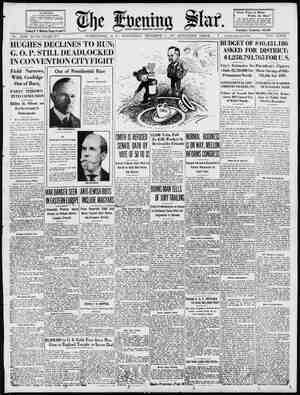Evening Star Newspaper, December 7, 1927, Page 11
You have reached the hourly page view limit. Unlock higher limit to our entire archive!
Subscribers enjoy higher page view limit, downloads, and exclusive features.
P THE EVENING STAR, WASHINGTON, D. €, WEDNESDAY, DECEMBER 7, 1927. a handful of states paid 8167,011,455.45 This was on the Mississippi river alone, in the past forty-four years. Tens of millions of dollars additional have been spent on the tributaries, and on the main stream itself prior to 1832. This Is the Third of a Series of Adver- tisements Published in the Interest of the People of the Mississippi Valley by The Times-Picagune WWn New OrleansJ/// From 1882, when the Mississippi River commission was organized as an agency of the government to assist in the control of floods along the Mississippi river, to the close of 1926, the stupendous sum of $238,- 101,449.03 was spent in the construction of levees, and in fighting the recurring floods. This expenditure was almost entirely along the Mississippi river, and takes little account of the sums used on the important tributaries, all of them interstate streams. The states of the lower valley contribut- ed $167,011,455.45 to this expenditure, or 70 per cent of the entire amount. When the cost of protecting the tribu- taries, defrayed entirely by the individual states, is taken into account, and when the large sums spent before 1882 are consider- ed—Louisiana alone had been building levees for 150 years prior to the advent of povernment aid—it will be seen that the cost of flood control to the lower valley has already been nearly as great as the amount spent by the national government in build- ing, the Panama canal. Construction of the Panama canal was justly considered a great national achieve- ment, possible only for one of the world’s wealthiest countries. Yetahandful of states in the Mississippi valley have borne the major part of an expenditure almost as reat in trying to protect themselves from floods: which they do not originate, but which have repeatedly devastated their lowlands. _All of the rainfall in Arkansas, Missis- sippi and Louisiana could have been con- trolled and carried safely to the Gulf for a small partof the money these states have spent, had it not been for the floods from the Rockies, the Alleghenies and the Great Lakes repion which sweep down periodically, swelling the current, burst- ing the levees, and carrying destruction in their path The experience of Louisiana is typical of the flood burden thrust on the states of the valley below Cairo. In the past sixty years, for which detailed records are available, more than $91,000,000 has been spent on the Mississippi and its tributaires to protect this state alone, and of this amount Louisiana contributed $63,000,- 000. In the four years succeediny the 1922 flood alone, the state has spent at the rate of $2,500,000 a year for flood pro- tection, in addition to the contributions of the Federal government. The states of the lower valley have already spent more than enough money to protect themselves from any possible flood that might originate’ within their borders. Every dollar now being spent, and to be spent in future, is to carry safely to the sea the floods of other states—what- ever amounts the lower valley states con- tribute in future must come from the pock- ets of taxpayers who only this year suf- fered a stappering loss of hundreds of millions of dollars through the failure of the levee lines. The lower valley states have done their part, and more, in defraying the cost of flood protection. They must have relief from Congress in this intolerable situation.




